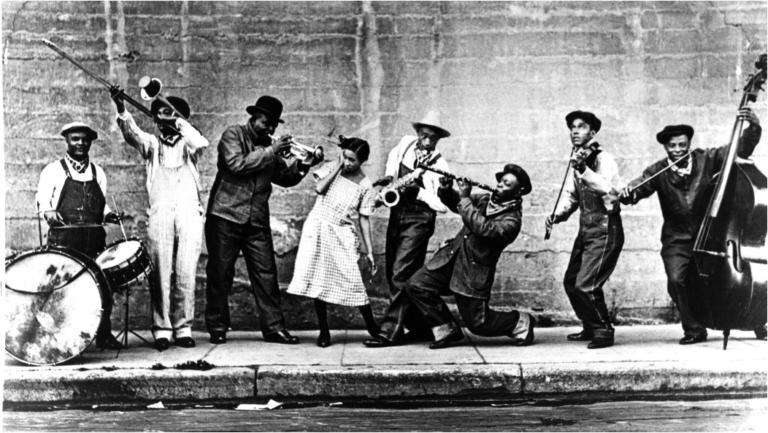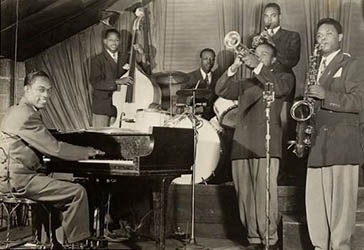Blog
What is Swing and why is it called that?


What is Swing...? Think of it as one long 'bounce'. Feel it, experience it, first of all, as a bounce of music that repeats evenly within the song you are dancing to.
Think of it then as a geographical bounce from the deep South of the blacks, from the cotton plantations to the West and East coasts of the US: where the jazz father was born, with African and Caribbean blood in the veins of musicians and dancers. Seguilo mentre attraversa l’Oceano rimbalzando ancora fino da noi, nell’Europa pronta ad accoglierlo come il figliolo musicale più giovane, scapestrato, coinvolgente, simpaticissimo. Seguine il corso temporale. Lasciati dettare i tempi. La diffusione dondolante e costante alla fine degli anni ’20, l’esplosione tra i ’30 e i ’40, a ondate travolgenti, alte e grosse come le big band che le producevano. The inevitable oblivion, due to the looming sadness of war and then, on the return from such tragedy, the competition of other styles, other dances, other freedom.

Until the new bounce, the rediscovery, the big comeback, this time global, with no more obstacles, a century after when it all started. Follow the rhythmic impulse that gets you out of your chair and onto the track.
That's what Swing is: the impossibility of standing still when the pulse, the bounce, that mind and body express in unison rises.
Swing from English literally translates into rocking. Although it changes often and that sense of swinging can be achieved in many different ways, it is not that one way makes one song more swinging than the other.
Swing,' say the dancers, 'is only noticeable when it is not there.
When it is there, however, it is an excellent stress reliever: endorphins in a thousand, a desire to socialise, a certain connection even between perfect strangers. Try it to believe.

Musically, swing is distinguished by a characteristic movement of the rhythm section and a type of execution of notes with a 'jumping' rhythm. To put it simply, it is a kind of pulsation, a bounce as we have said, a rhythmic cadence that continues to carry the rhythm forward, as if there were a delay on some beats and as if other beats were faster.
In jazz jargon, 'to swing' (or to swing) means to be musically expressive and communicative: the swinging, or sliding, is created by placing the accent on the upbeat, instead of the beat. And so, if in a normal folk song of the time in 4/4 the feeling will be this: ONE two THREE four, in a swing song in 4/4 the feeling will be different, just by shifting the accent: one TWO three FOUR.
A definition for the more experienced? "Swing is a rhythmic impulse produced by factors of various kinds, including above all the accentuation on the weak times of the measure and the well-defined rhythmic scansion". To summarise, in practice, triplet notes are played on binary time signatures: for example, two quavers (one-eighth notes) will be played as a triplet of quavers (three eighths played for the duration of a quarter) with the first two notes tied. The accent is preferentially given on the upbeat.

Dear Friends, Until June 15, your orders may be processed in four days instead of two. We apologise for this temporary inconvenience. Keep on swinging Dismiss
